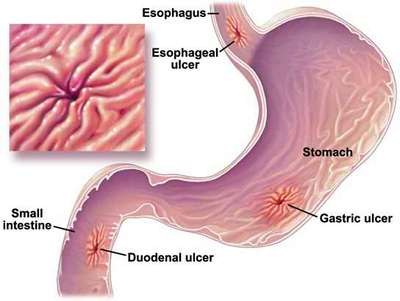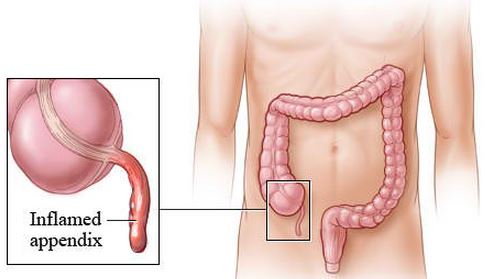Stomach Pain After Eating
The stomach is part of the digestive system that is a muscular organ that is located at the upper left quadrant of the abdomen. It is responsible for digestion of the food that we consume.
Stomach pain after Eating Causes
There are some people who encounter stomach pain after eating. This may indicate a severe or mild problem such as:
Ulcers
When one has ulcers, one will manifest stomach pain after eating. Ulcers are shallow erosion of the lining of the stomach. There are actually three types of ulcers: peptic, gastric and duodenal ulcers. When one experiences ulcer, she or he will not have fun eating. Also if the beverage that he or she drinks is acidic, it will irritate the ulcer and leads to pain in the stomach.

Lactose Intolerance
People who are intolerant of lactose ingest lactose rich products will manifest severe stomach pain. Those people who are lactose intolerant usually lack the lactase enzyme. Hence, they stay away from lactose rich food such as dairy products like milk or ice cream.
Gastroenteritis
It is often referred to as stomach flu which may lead to stomach pain after eating. As quickly as 4 hours, the virus will attack to the gastrointestinal tract system that may result to stomach pain.
Food Poisoning
When one consumes food that is contaminated with bacteria that last for twelve hours to 2 days, the person will experience sever stomach pain.
Celiac Disease
Celiac Disease arises when a person consumes a food that is rich in gluten. When one is diagnosed to have such disease condition, according to experts, he or she will manifest stomach pain after eating.
Appendicitis
When one has appendicitis, he or she will manifest an intense paint at his or her right lower side of the abdomen which will happen right after eating.

Gallstones
Some of the people who manifest stomach pain after eating, upon diagnostic test, will manifest gall stones.
Heartburn
Often times, theses are what people will have when they are having stomach pain after eating food.
Irritable Bowel Syndrome
When one has a diagnosis of Irritable Bowel syndrome, he or she has an erratic behavior of his or her colon or large intestines. He or She will manifest stomach pain after eating.
Overeating
When one eats to fast his food, it will often result to a feeling of stomach pain after eating. It also occurs when a person has an empty stomach for a long period and then suddenly eats a voracious large amount of food, will lead to stomach pain after eating.
Intestinal Obstruction
When one experiences stomach pain after eating with vomitus that has a fowl stool like smell, may be diagnosed with obstruction in their intestines.
Food Intolerance
Intolerance of food happens when one is allergic to a certain food items, thus leading to an experience of stomach pain after eating.
Diverticulitis
This condition happens when the stomach becomes inflamed. This will cause pain in the stomach after eating.
Constipation
It is another cause of why person experiences stomach pain after eating. It is due to less fiber in the person’s diet.
Stomach pain after Eating Asscoiated Symptoms
When one has stomach pain after eating, he or she may manifest the following symptoms:
- Nausea
- Vomiting
- Fever
- Stools
- Dark Urine
- Change in Bowel Movement
- Abdominal Swelling
- Diarrhea
- Yellow Skin or jaundice
- Malabsorption syndromes
Stomach pain after Eating Diagnosis
When a person complaints of stomach pain after eating the best way to deal the symptoms is to go to the nearest hospital and consult your trusted doctor. The doctor, on the other hand will be the one to diagnose the reason why you have stomach pain experience after eating or consuming food. He or she will do assessment by both physical and through interviewing you. He or she will be able to come up with a presumable diagnosis and then will confirm it by letting you take diagnostic tests such as:
- Barium Enema
- Blood Test
- Urine Test
- CT-Scan
- Colonoscopy
- Magnetic Resonance Imaging
- Sigmoidoscopy
- Esophagogastroduodenoscopy
- Capsule Enteroscopy
- Electrocardiogram or ECG tracing
- X-Rays of the Abdomen
- Ultrasound of the Abdomen
- Upper GI and small bowel series
- Laparoscopic Surgery
Stomach pain after Eating Treatment
When you are experiencing or had experience stomach pain after consumption of food, the best way to do it is to follow these simple steps:
Stop eating !
Eating may be the cause of discomfort; you must stop eating the food that you are currently eating.
Take abdominal pain relief medications
You can take medications for abdominal pain relief. There are medications that don’t need any prescription, you need to consult pharmacists.
Visit the TOILET
Maybe the cause of stomach pain means the call of nature and it is need for you to visit the toilet.
Stretch slowly and breathe in and out
You can drink carbonated beverages because perhaps the cause of stomach pain after eating is due to gas accumulation.
Drink Herbal Medications that aid in digestion
The herbal tea that aids in the digestion process includes teas that are rich in ginger, mint or chamomile.
You can walk
This is the simplest treatment of curing the stomach pain after eating. You only walk if you are able to walk but if in case you can’t walk, then this option is not for you.
Avoid food that causes you to have stomach pain
Such food may include spicy, greasy, citrusy foods, dairy products, chocolate, and tomato products.
Take Antacid Medications
When you have stomach pain that is related to stomach acid, you can take over the counter antacids
Place a heating pad or warm object in the painful Stomach area
This will aid in relaxing the muscles, relieving pain and making the area dilate. If you don’t have heating pad, you can use towel and do warm compress.